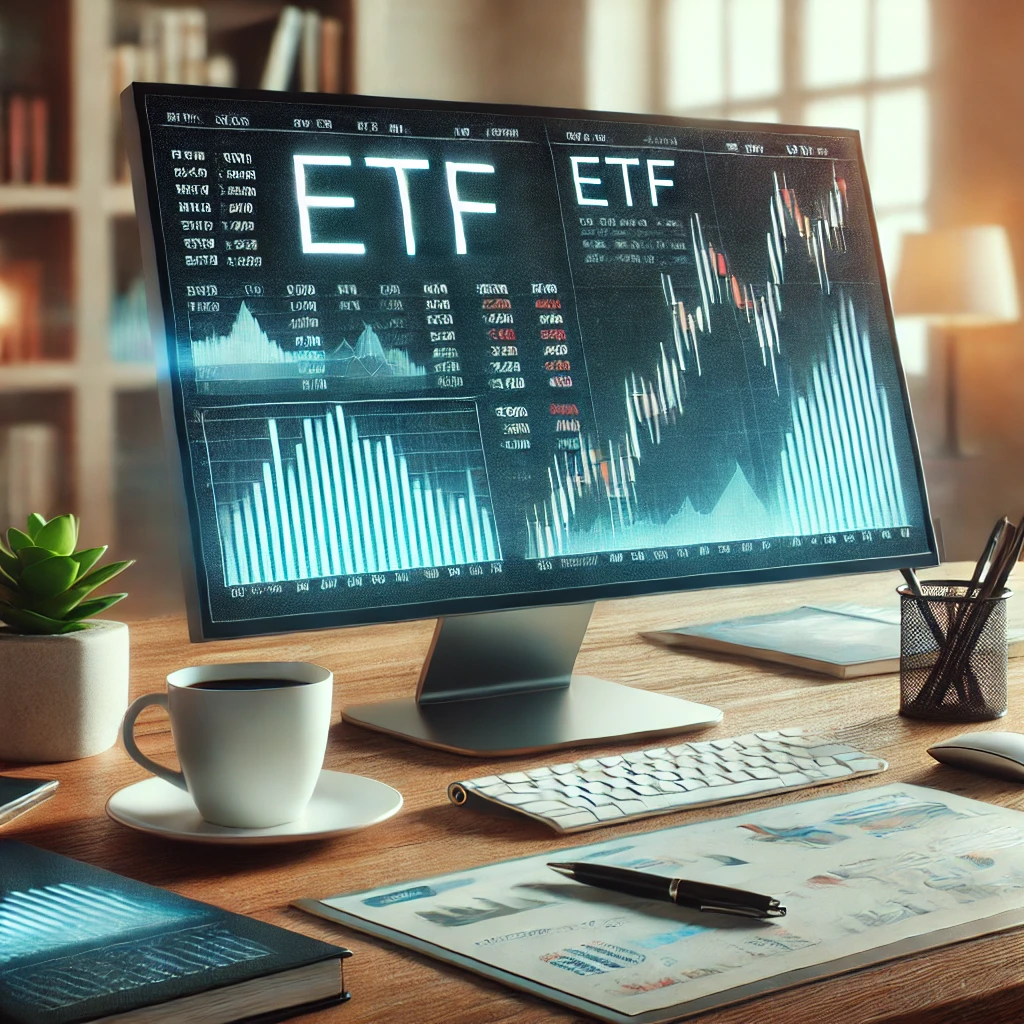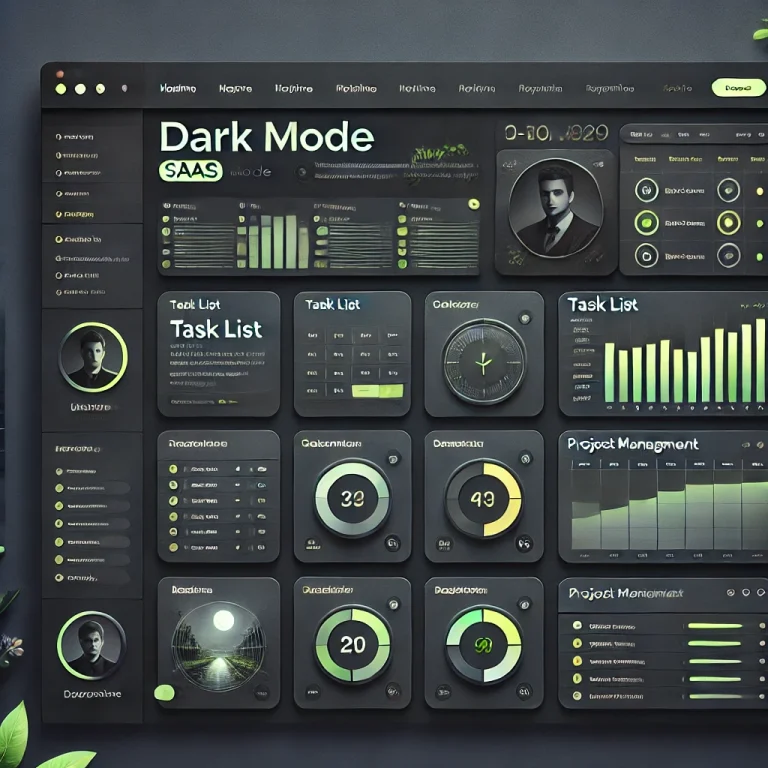ETFs: The Ultimate Guide to Exchange-Traded Funds
Exchange-Traded Funds (ETFs) are revolutionizing the way people invest, offering simplicity, diversification, and cost-efficiency. Whether you’re a beginner or a seasoned investor, understanding ETFs can help you build a robust investment portfolio. This comprehensive guide explores everything you need to know about ETFs, their types, benefits, and how to invest in them effectively.
Table of Contents
- What Are ETFs?
- How Do ETFs Work?
- Types of ETFs
- Benefits of Investing in ETFs
- Drawbacks of ETFs
- How to Start Investing in ETFs
- Top Tips for ETF Investing
- ETFs vs. Mutual Funds
- FAQs About ETFs
- Conclusion
What Are ETFs?
ETFs, or Exchange-Traded Funds, are investment funds that trade on stock exchanges, similar to individual stocks. They pool money from multiple investors to invest in a diversified portfolio of assets, including stocks, bonds, commodities, or a mix of these.
Unlike mutual funds, ETFs are traded throughout the day on stock exchanges, making them more flexible and accessible.
How Do ETFs Work?
ETFs work by tracking an underlying index or asset. For instance:
- A Stock ETF might track the S&P 500.
- A Commodity ETF could follow the price of gold.
When you invest in an ETF, you’re essentially buying shares of the fund, which represent a proportional interest in its holdings.
Types of ETFs
1. Stock ETFs
These ETFs invest in a collection of stocks and track specific indices like the S&P 500 or NASDAQ-100. They’re ideal for investors seeking exposure to equities without picking individual stocks.
2. Bond ETFs
Bond ETFs include government, corporate, or municipal bonds. They provide steady income and are suitable for risk-averse investors.
3. Commodity ETFs
Commodity ETFs focus on physical goods such as gold, oil, or agricultural products. They offer exposure to commodities without direct ownership.
4. Sector ETFs
Sector ETFs invest in specific industries, such as technology, healthcare, or energy. They allow investors to target booming sectors.
5. Thematic ETFs
These ETFs focus on emerging trends like clean energy, AI, or blockchain technology, appealing to forward-looking investors.
Benefits of Investing in ETFs
ETFs have gained massive popularity due to their numerous benefits:
- Diversification: ETFs provide access to a broad range of assets, reducing investment risk.
- Cost Efficiency: They typically have lower expense ratios compared to mutual funds.
- Liquidity: ETFs can be traded throughout the day, offering flexibility and convenience.
- Transparency: Holdings in ETFs are disclosed daily, making them highly transparent.
- Tax Efficiency: ETFs generally trigger fewer taxable events than mutual funds.
Drawbacks of ETFs
While ETFs offer many advantages, they’re not without drawbacks:
- Trading Costs: Frequent trading of ETFs can lead to higher transaction costs.
- Market Risk: ETFs are subject to market fluctuations, which can affect returns.
- Limited Active Management: Unlike actively managed funds, most ETFs passively track indices.
How to Start Investing in ETFs
1. Open a Brokerage Account
Choose a brokerage platform that offers access to ETFs. Many platforms now provide commission-free ETF trading.
2. Research ETFs
Look for ETFs that align with your investment goals, such as growth, income, or diversification.
3. Check the Expense Ratio
Lower expense ratios mean more of your money goes toward investment returns.
4. Assess the ETF’s Holdings
Review the assets within the ETF to ensure they match your investment strategy.
5. Start Small
Begin with small investments to understand how ETFs perform in different market conditions.
Top Tips for ETF Investing
- Diversify Your Portfolio: Avoid putting all your money in one ETF. Diversify across asset classes and sectors.
- Rebalance Regularly: Adjust your portfolio periodically to maintain your desired asset allocation.
- Avoid Over-Trading: While ETFs are liquid, excessive trading can erode returns.
- Monitor Performance: Keep track of how your ETFs perform and adjust as needed.
- Understand Risks: Be aware of the risks associated with the underlying assets in the ETF.
ETFs vs. Mutual Funds
Key Differences
| Feature | ETFs | Mutual Funds |
|---|---|---|
| Trading | Intraday on stock exchanges | End-of-day based on NAV |
| Management | Usually passive | Active or passive |
| Cost | Lower expense ratios | Higher expense ratios |
| Tax Efficiency | Fewer taxable events | More taxable events |
| Minimum Investment | None (you can buy a single share) | Often requires a minimum amount |
ETFs are typically preferred for their flexibility and lower costs, while mutual funds may suit those seeking active management.
FAQs About ETFs
1. Are ETFs good for beginners?
Yes, ETFs are ideal for beginners due to their simplicity, low costs, and diversification.
2. Can I lose money in ETFs?
Like any investment, ETFs carry market risk, and you can lose money if the underlying assets decline in value.
3. How are ETFs taxed?
ETFs are subject to capital gains tax, but they’re generally more tax-efficient than mutual funds.
4. What’s the minimum investment for ETFs?
There’s no minimum investment; you can buy a single share of an ETF.
5. How do I choose the right ETF?
Focus on your investment goals, research the ETF’s holdings, and consider the expense ratio.

ETFs are a versatile and powerful investment tool suitable for a wide range of financial goals. They offer diversification, cost-efficiency, and flexibility, making them an excellent choice for both novice and experienced investors.
By understanding how ETFs work, exploring their types, and following best practices, you can harness the full potential of this investment vehicle. Start your ETF journey today and take a significant step toward achieving your financial aspirations!
Delving Deeper Into ETFs: What Makes Them So Powerful?
To truly harness the potential of ETFs, it’s important to explore their structure, performance factors, and strategic uses in-depth. In this extended guide, we will cover the intricacies of ETF management, performance metrics, and how to avoid common pitfalls.
How ETFs Are Structured
Understanding the mechanics behind ETFs can help you make informed investment decisions. ETFs operate through a unique creation and redemption process:
- Creation Process:
- Large institutional investors, known as Authorized Participants (APs), create ETF shares by purchasing the underlying assets and transferring them to the ETF provider.
- In exchange, the ETF issues new shares that can be traded on the open market.
- Redemption Process:
- APs can also redeem ETF shares by exchanging them for the underlying assets.
- This process helps keep the ETF’s market price aligned with its Net Asset Value (NAV).
Key Metrics to Evaluate ETFs
When selecting ETFs, it’s essential to go beyond surface-level information and analyze key performance metrics:
- Expense Ratio:
- A lower expense ratio means more of your returns stay in your pocket. Look for ETFs with expense ratios below 0.20% for broad market exposure.
- Tracking Error:
- This measures how closely an ETF mirrors its benchmark index. Lower tracking errors indicate better performance.
- Liquidity:
- ETFs with higher trading volumes are more liquid, making them easier to buy and sell without affecting their price.
- Yield:
- For income-focused investors, evaluate the ETF’s dividend yield or interest payouts.
- Sector Exposure:
- Ensure the ETF aligns with your desired sector allocation. For example, tech-focused ETFs may provide higher growth but carry more risk.
How to Build a Diversified Portfolio with ETFs
A diversified portfolio mitigates risk and maximizes returns. Here’s how to use ETFs to achieve optimal diversification:
- Core-Satellite Strategy:
- Use a broad-market ETF (e.g., S&P 500 ETF) as the core of your portfolio.
- Add sector-specific or thematic ETFs as satellites to target growth opportunities.
- Asset Allocation:
- Balance your investments across asset classes:
- Stocks ETFs for growth.
- Bond ETFs for income and stability.
- Commodity ETFs for inflation hedges.
- Balance your investments across asset classes:
- Geographical Diversification:
- Include international ETFs to gain exposure to global markets.
- Examples: Emerging markets ETFs (e.g., Vanguard FTSE Emerging Markets ETF).
ETFs for Different Investment Goals
1. Long-Term Growth
- Opt for ETFs tracking major indices like the S&P 500 or MSCI World Index.
- Examples: SPDR S&P 500 ETF (SPY), iShares Core MSCI World ETF (URTH).
2. Income Generation
- Focus on high-yield bond ETFs or dividend-paying stock ETFs.
- Examples: Vanguard High Dividend Yield ETF (VYM), iShares iBoxx High Yield Corporate Bond ETF (HYG).
3. Risk Management
- Choose defensive ETFs or those investing in stable sectors like utilities and consumer staples.
- Examples: Utilities Select Sector SPDR Fund (XLU), Consumer Staples Select Sector SPDR Fund (XLP).
4. Ethical Investing
- Explore socially responsible or ESG (Environmental, Social, Governance) ETFs.
- Examples: iShares ESG Aware MSCI USA ETF (ESGU), Vanguard ESG U.S. Stock ETF (ESGV).
Advanced ETF Strategies
For experienced investors, advanced strategies can enhance returns or hedge risks:
- Leveraged ETFs:
- Provide magnified exposure to an index (e.g., 2x or 3x returns).
- Example: ProShares Ultra S&P 500 (SSO).
- Inverse ETFs:
- Gain from declining markets by shorting an index.
- Example: ProShares Short S&P 500 (SH).
- Options Trading on ETFs:
- Use ETF options for hedging or speculative purposes.
- Example: Covered calls or protective puts on SPDR ETFs.
- Sector Rotation:
- Shift investments between sector ETFs based on market cycles.
- Example: Rotate into healthcare ETFs during downturns and technology ETFs during growth phases.

Common Mistakes to Avoid with ETFs
- Chasing Past Performance:
- Past performance is not indicative of future results. Focus on underlying assets and strategy.
- Ignoring Costs:
- While ETFs are cost-efficient, frequent trading can incur high transaction costs.
- Overconcentration:
- Avoid putting too much weight on a single ETF or sector. Diversification is key.
- Misunderstanding Leverage:
- Leveraged and inverse ETFs are designed for short-term trading, not long-term holding.
Popular ETFs to Consider
Here are some top-performing ETFs across various categories:
- Broad Market:
- Vanguard Total Stock Market ETF (VTI)
- iShares MSCI ACWI ETF (ACWI)
- Sector-Specific:
- Technology: Invesco QQQ Trust (QQQ)
- Healthcare: iShares U.S. Healthcare ETF (IYH)
- Thematic:
- Clean Energy: iShares Global Clean Energy ETF (ICLN)
- Artificial Intelligence: Global X Robotics & Artificial Intelligence ETF (BOTZ)
- Fixed Income:
- iShares Core U.S. Aggregate Bond ETF (AGG)
- Vanguard Short-Term Bond ETF (BSV)
How ETFs Are Transforming Investment Practices
ETFs have democratized investing, providing access to sophisticated strategies once available only to institutional investors. Key contributions include:
- Accessibility:
- ETFs allow individuals to invest in markets, sectors, and commodities with a single purchase.
- Innovation:
- Thematic ETFs enable investors to capitalize on emerging trends like blockchain, AI, and clean energy.
- Education:
- ETFs have encouraged greater financial literacy as investors research the assets they track.
FAQs: Everything You Need to Know About ETFs
1. Can ETFs Pay Dividends?
Yes, ETFs that hold dividend-paying stocks or bonds distribute dividends to investors.
2. How Are ETFs Priced?
ETFs are priced based on their Net Asset Value (NAV), but market supply and demand can cause slight deviations.
3. Are ETFs Suitable for Retirement Accounts?
Absolutely. ETFs are an excellent choice for 401(k)s and IRAs due to their low costs and diversification.
4. What’s the Difference Between Active and Passive ETFs?
- Passive ETFs track an index.
- Active ETFs are managed by professionals who make investment decisions to outperform the market.
5. How Do Currency-Fluctuations Impact ETFs?
For international ETFs, currency fluctuations can influence returns. Currency-hedged ETFs can mitigate this risk.
Conclusion: Why ETFs Belong in Your Portfolio
ETFs offer a powerful, flexible, and cost-effective way to invest, whether you’re building wealth, managing risk, or targeting specific markets. With their simplicity and versatility, ETFs are indispensable tools for modern investors.
By following the strategies, tips, and insights outlined in this guide, you can confidently incorporate ETFs into your investment portfolio. Start exploring the world of ETFs today and unlock your potential for financial growth and security!
Top ETFs to Elevate Your Investment Portfolio
Exchange-Traded Funds (ETFs) offer a wealth of opportunities for investors looking to diversify their portfolios, achieve steady growth, and capitalize on emerging trends. With thousands of ETFs available, choosing the right ones can feel overwhelming. To help you make informed decisions, we’ve curated a list of some of the best ETFs across various categories, each designed to meet different investment goals and risk tolerances.
1. Broad Market ETFs
Vanguard Total Stock Market ETF (VTI)
- Why It’s Great: Provides exposure to the entire U.S. stock market, including small, mid, and large-cap companies.
- Expense Ratio: 0.03% (extremely low).
- Best For: Long-term growth and diversification within the U.S. market.
iShares MSCI ACWI ETF (ACWI)
- Why It’s Great: Offers access to global equities, covering both developed and emerging markets.
- Expense Ratio: 0.32%.
- Best For: Investors seeking international diversification.
2. Sector-Specific ETFs
Technology: Invesco QQQ Trust (QQQ)
- Why It’s Great: Tracks the Nasdaq-100, offering exposure to top technology giants like Apple, Microsoft, and Amazon.
- Expense Ratio: 0.20%.
- Best For: Growth-oriented investors targeting the tech sector.
Healthcare: Health Care Select Sector SPDR Fund (XLV)
- Why It’s Great: Focuses on stable and growing healthcare companies like Johnson & Johnson and Pfizer.
- Expense Ratio: 0.10%.
- Best For: Defensive investors seeking stability with growth potential.
Clean Energy: iShares Global Clean Energy ETF (ICLN)
- Why It’s Great: Provides exposure to renewable energy companies like solar and wind power.
- Expense Ratio: 0.42%.
- Best For: Eco-conscious investors aiming to profit from the transition to clean energy.
3. Thematic ETFs
Global X Robotics & Artificial Intelligence ETF (BOTZ)
- Why It’s Great: Invests in companies leading advancements in robotics and AI technologies.
- Expense Ratio: 0.69%.
- Best For: Forward-looking investors focused on disruptive technologies.
ARK Innovation ETF (ARKK)
- Why It’s Great: Actively managed fund targeting innovative sectors like genomics, fintech, and electric vehicles.
- Expense Ratio: 0.75%.
- Best For: Aggressive investors seeking high growth potential in cutting-edge industries.
4. Bond ETFs
iShares Core U.S. Aggregate Bond ETF (AGG)
- Why It’s Great: Tracks the U.S. bond market, providing a mix of government, corporate, and mortgage-backed securities.
- Expense Ratio: 0.03%.
- Best For: Investors seeking steady income with low risk.
Vanguard Short-Term Bond ETF (BSV)
- Why It’s Great: Focuses on short-term bonds, minimizing interest rate risk.
- Expense Ratio: 0.04%.
- Best For: Conservative investors prioritizing stability and liquidity.
5. Dividend ETFs
Vanguard High Dividend Yield ETF (VYM)
- Why It’s Great: Includes companies with a history of paying high dividends, such as Procter & Gamble and Coca-Cola.
- Expense Ratio: 0.06%.
- Best For: Income-focused investors seeking reliable dividend payments.
Schwab U.S. Dividend Equity ETF (SCHD)
- Why It’s Great: Focuses on high-quality dividend-paying U.S. companies with sustainable payout ratios.
- Expense Ratio: 0.06%.
- Best For: Balancing income and growth.
6. International ETFs
Vanguard FTSE Emerging Markets ETF (VWO)
- Why It’s Great: Provides exposure to fast-growing economies like China, India, and Brazil.
- Expense Ratio: 0.08%.
- Best For: Diversifying into high-growth international markets.
iShares MSCI EAFE ETF (EFA)
- Why It’s Great: Tracks developed international markets in Europe, Asia, and Australia.
- Expense Ratio: 0.33%.
- Best For: Reducing portfolio risk through geographic diversification.
7. Commodity ETFs
SPDR Gold Shares (GLD)
- Why It’s Great: Tracks the price of gold, offering a hedge against inflation and market volatility.
- Expense Ratio: 0.40%.
- Best For: Investors seeking a safe haven during uncertain times.
Invesco DB Commodity Index Tracking Fund (DBC)
- Why It’s Great: Provides broad exposure to commodities like oil, natural gas, and metals.
- Expense Ratio: 0.85%.
- Best For: Hedging against inflation and diversifying away from equities.
8. ESG (Environmental, Social, Governance) ETFs
iShares ESG Aware MSCI USA ETF (ESGU)
- Why It’s Great: Invests in companies with strong ESG practices, without compromising returns.
- Expense Ratio: 0.15%.
- Best For: Investors who value ethical investing while aiming for solid performance.
Vanguard ESG International Stock ETF (VSGX)
- Why It’s Great: Provides global exposure to socially responsible companies.
- Expense Ratio: 0.12%.
- Best For: ESG-focused investors seeking international diversification.
Smart Tips for Choosing ETFs
- Define Your Goals: Decide whether you’re investing for growth, income, or capital preservation.
- Check Expense Ratios: Opt for low-cost ETFs to maximize your returns.
- Assess Liquidity: High liquidity ensures easier buying and selling.
- Understand the Holdings: Review the underlying assets to align with your strategy.
- Diversify: Avoid over-concentration in a single ETF or sector.
Conclusion: Build Wealth With the Right ETFs
ETFs offer endless possibilities for creating a balanced, diversified, and growth-focused portfolio. Whether you’re a beginner seeking simplicity or an experienced investor targeting niche markets, there’s an ETF tailored to your needs. By incorporating a mix of broad-market, sector-specific, and thematic ETFs, you can position yourself for long-term success.
Start building your ETF portfolio today and take a significant step toward achieving your financial goals!



